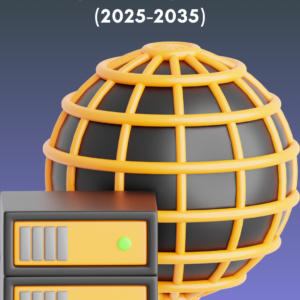1. Executive Summary
- Overview of the semiconductor capital equipment market
- Key findings: Evolution of customer needs, purchasing trends, and market dynamics
- Market opportunity: $150B growth potential by 2035
2. Customer Needs and Considerations
- Process Improvement Requirements: Demand for precision, accuracy, and high throughput
- Efficiency and Throughput Demands: Balancing speed and yield in chip production
- Technology Node Advancements: Shift towards 3nm, 2nm, and beyond
- Cost Reduction Pressures: Total cost of ownership (TCO) and operational efficiency
- Sustainability and Energy Efficiency: Growing focus on reducing power consumption and environmental impact
- Flexibility and Customization: Adaptability of equipment to different processes and materials
- Expert Insight: “The $30B shift towards greener, more flexible semiconductor equipment” – CTO, Leading Foundry
3. Key Players and Competitive Landscape
- Overview of Major Equipment Providers:
- ASML: Leading in photolithography and EUV technology
- Lam Research: Specializing in etching and deposition equipment
- Applied Materials: Innovation in wafer processing and packaging technologies
- Yield Engineering Systems (YES), Amkor, and JCET: Focus on packaging and post-fabrication processes
- Emerging Players: Innovations from startups and niche equipment suppliers
- Regional Market Dynamics: Dominance of Asia-Pacific, and key growth areas in North America and Europe
- Competitive Strengths and Weaknesses: Comparative analysis of key players in terms of technology, service, and cost
4. Key Purchasing Criteria
- Technical Performance and Specifications: Importance of equipment reliability, precision, and speed
- Total Cost of Ownership (TCO): Factoring in upfront costs, operational expenses, and maintenance
- After-Sales Support and Service Network: Availability of spare parts, technical expertise, and ongoing support
- Compatibility with Existing Systems: Seamless integration with existing production lines and fab processes
- Innovation Pipeline and Future-Readiness: Ability to scale with future technology nodes and emerging architectures
- Delivery Times and Supply Chain Reliability: Ensuring timely deployment amidst global supply chain challenges
5. Industry Trends Impacting Customer Decisions
- Transition to Advanced Nodes: Moving to 3nm, 2nm, and below driving demand for cutting-edge equipment
- Adoption of New Architectures: Impact of GAA (Gate-All-Around), 3D packaging, and chiplet technologies
- Specialty and Compound Semiconductors: Growing demand for equipment suited for power electronics, RF, and optoelectronics
- AI/ML Integration in Equipment: Leveraging AI for predictive maintenance, process optimization, and yield improvement
- Sustainability Trends: Increasing demand for energy-efficient and environmentally friendly equipment
6. Case Studies (Generic, Non-Company Specific)
- Foundry Example: How a major foundry optimized its equipment selection process for 3nm production
- Memory Chip Production: Balancing cost and performance for DRAM and NAND fabs
- Analog/Power Semiconductor Manufacturing: Addressing unique challenges in high-voltage chip production with custom equipment
7. Future Outlook (2025-2035)
- Anticipated Shifts in Customer Needs: Increased focus on precision, flexibility, and sustainability
- Emerging Technologies Impacting Equipment Requirements: Role of quantum computing, advanced packaging, and heterogeneous integration in driving new equipment needs
- Long-Term Considerations for Equipment Investments: Planning for obsolescence, future upgrades, and extended product lifecycles
- Expert Forecast: “How the semiconductor capital equipment landscape will evolve by 2035”
8. Conclusion
- Key Takeaways for Understanding Customer Perspectives:
- Focus on flexibility, sustainability, and cost-efficiency as key drivers of equipment selection
- Critical Factors to Monitor:
- Innovations in equipment, evolving customer needs, and competitive landscape
- Strategic Recommendations:
- Building long-term relationships with customers through customization and after-sales support






